Georgian Amber Wine, an 8000 Year Old Tradition
The first time I tried Georgian amber wine, I thought it was rosé.
It was my first night in Tbilisi, and my friends and I had decided to go and grab drinks at the exact moment that there was a power cut in the city.
We wandered into the first bar we came across, ordered drinks, and figured we’d just sit in the dark until the power came back on.
I tell you this, not to bore you, but because the fact that I couldn’t actually see my drink is relevant here.
You see, when I took my first sip of ‘dry white wine,’ I was convinced that the bartender had mixed up my order and given me rosé instead.
The spring flowers and dried fruit aromas were one thing, but the intense tannins were what made me convinced that I could not possibly be drinking white wine.
After a rather embarrassing exchange with the bartender, during which he shone his torch on the drink to prove that I was not drinking rosé, I was forced to admit that maybe, just maybe, he knew best.
This, dear readers, was my first foray into Georgian amber wine.
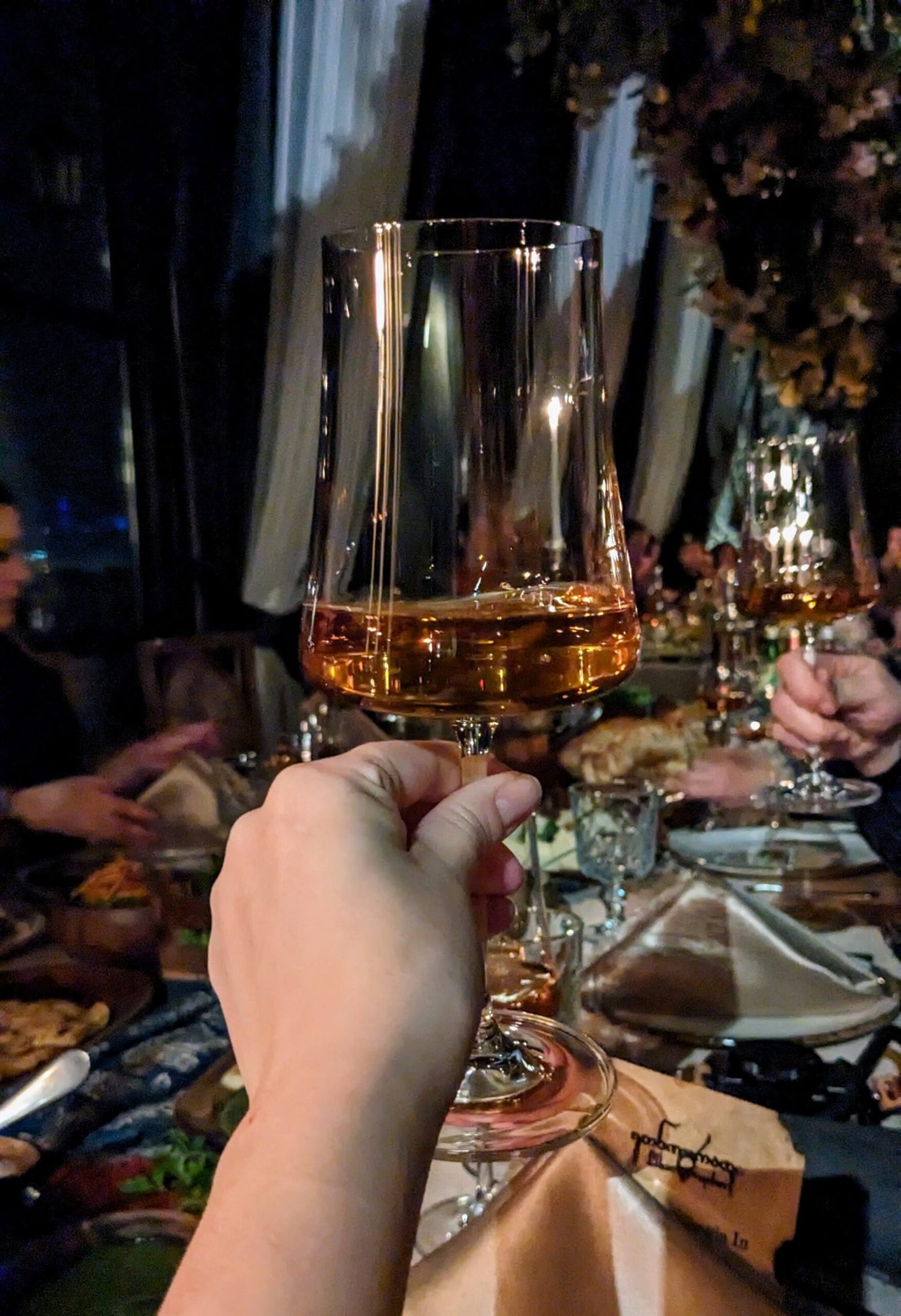
Discovering Georgian Amber Wine, an 8000 Year Old Tradition
8000 Years of History
Georgia has been producing wine for more than 8000 years, dating all the way back to the Neolithic period!
This makes it the birthplace of wine, and while other countries occasionally challenge that claim (Iran, I’m looking at you), archaeological findings prove that Georgians were making wine at least 1000 years before Iran and other early winemaking countries such as Türkiye, Armenia, and Azerbaijan.
When ancient Georgian qvevri were unearthed in 2015, they went through a vigorous chemical analysis which confirmed the presence of tartaric acid, the fingerprint compound for grape and wine.
So then, with Georgia being the Grandaddy of vino, it’s safe to say that they probably know what they’re doing when it comes to winemaking.

An Introduction to Qvevri Wine
While 95% of Georgian wine is now produced according to modern winemaking styles (such as the use of stainless steel tanks and oak barrels), the remaining 5% is made using the traditional method – qvevri.
Qvevri are large, egg-shaped clay containers that can hold over 1500 litres of wine (that’s 2000 bottles!).
To make wine in a qvevri, the grapes are harvested from the vines and slightly crushed, before being put into the qvevri with the skins, stems, and seeds. The qvevri is then sealed and buried in the ground to age, usually for between 3-6 months.
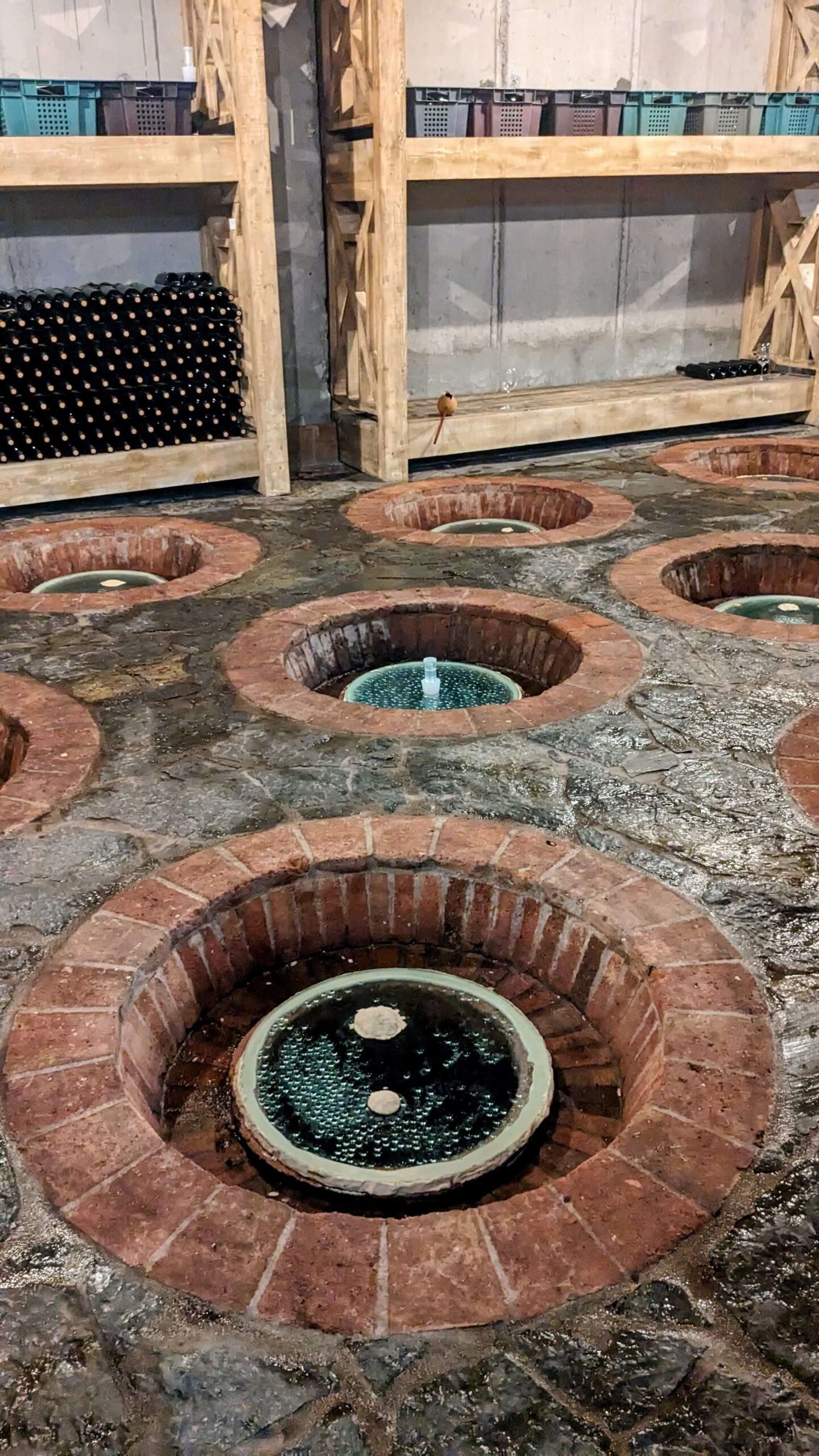
The beauty of qvevri winemaking is that not only are the grape musts able to move around more freely in the egg-shaped vessel (which encourages the extraction of flavours and structure), but the stable underground temperatures enable the wine to naturally maintain a certain temperature during fermentation.
These days, modern winemaking technology is more than able to control the temperature during the winemaking process, but 8000 years ago, the qvevri was cutting-edge technology!
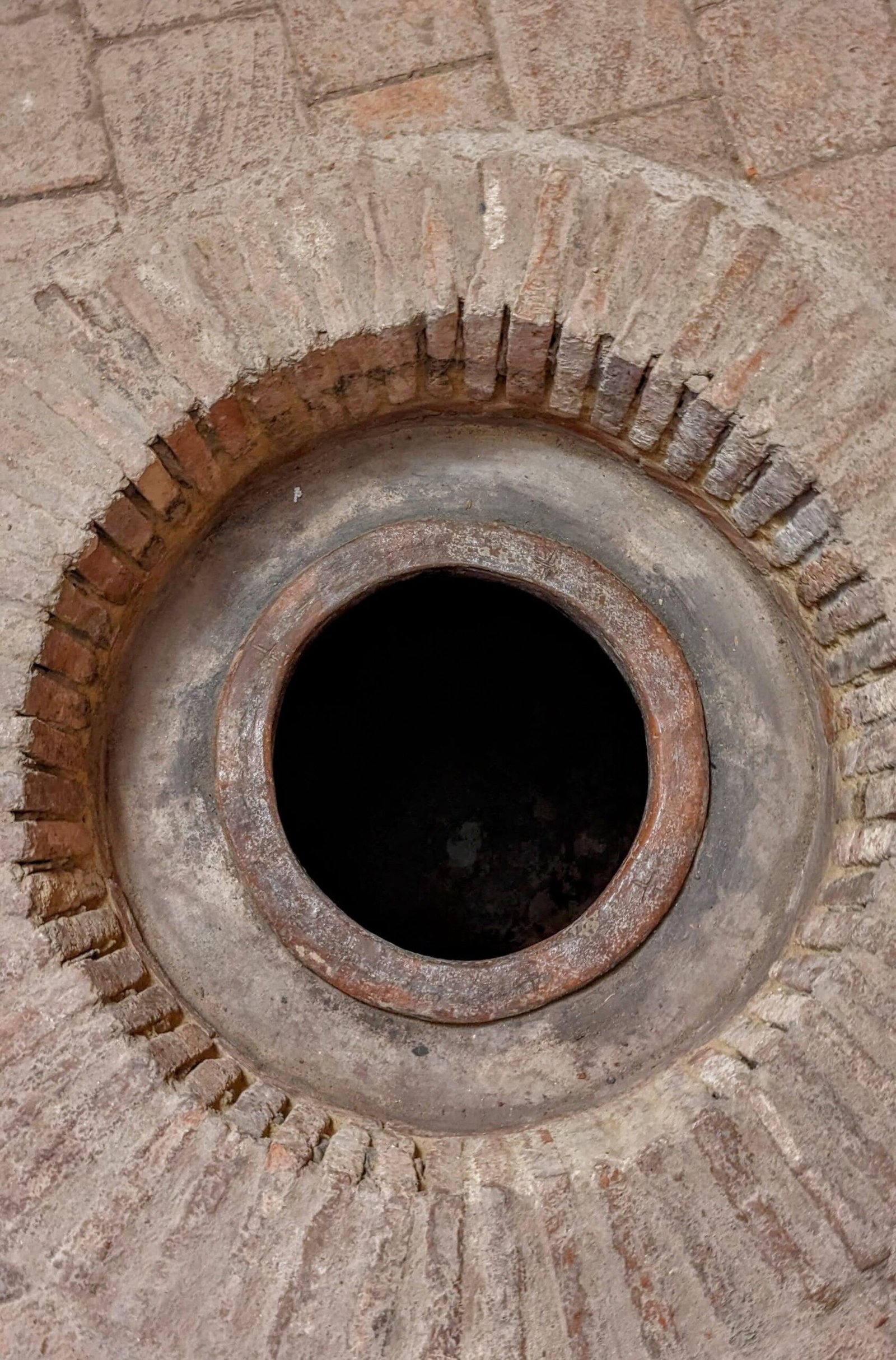
Even today, qvevri winemaking is highly regarded, with UNESCO naming the qvevri an Intangible Cultural Heritage in 2013!
Although both red and white grapes can be used to make wine in a qvevri, we’re here to talk about amber wine, and so the white grapes are what I’ll be talking about in this article.
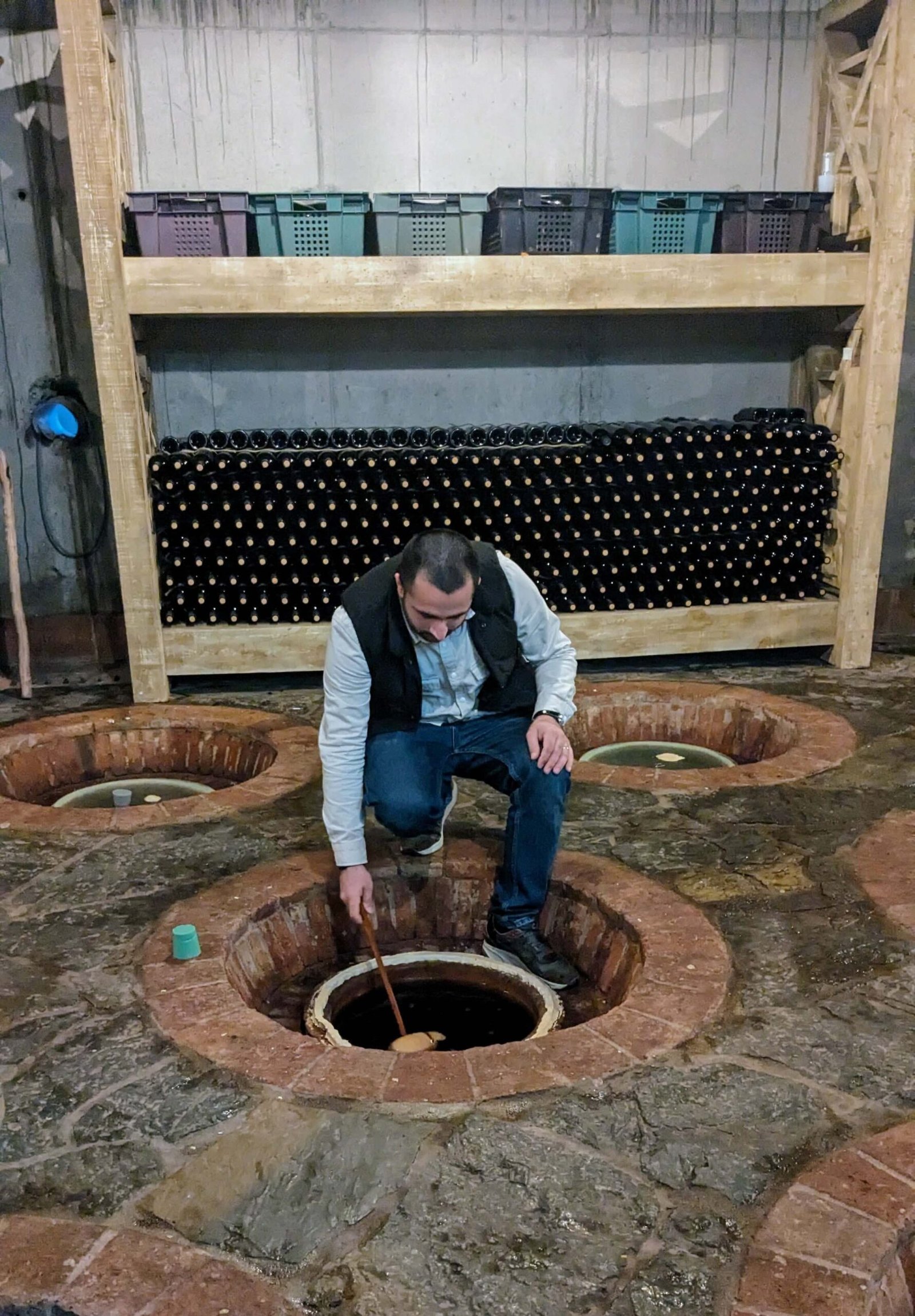
What is Georgian Amber Wine?
Amber wine is wine made in qvevri using white grapes with the skin left on.
Usually, white wine is made without the skin, but for amber wine, the wine is fermented on the grape skins.
The longer the skins are left on, the deeper the colour of the wine, which, as the more astute amongst you may have already guessed, is amber.

Amber wine is sometimes referred to as ‘orange wine’ (which we’ll get into later), or skin-contact wine.
It is made using Georgian grapes such as Rkatsiteli, Mtsvane, and Kisi, although with 525 endemic grape varieties in Georgia, the possibilities are endless!
Something super interesting about amber wine is that Georgians have never stopped making it in this way, despite huge pressure to convert to more conventional methods of mass production during the years of Soviet rule.
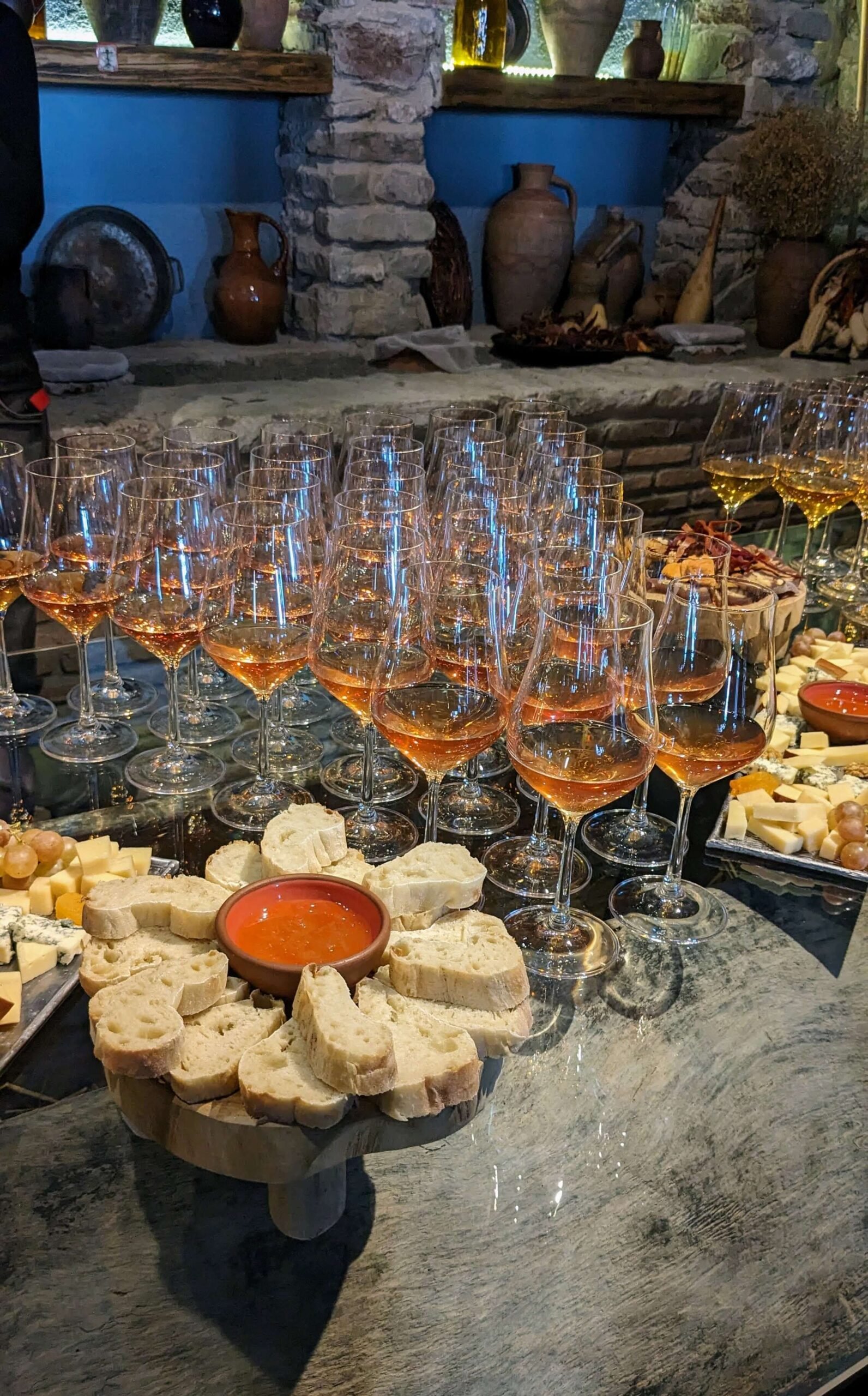
What Does Amber Wine Taste Like?
Georgian amber wines have a very acquired taste, and it’s difficult to compare them to any other type of wine.
In general, they’re quite dry, often with notes of ripe fruits, dried fruits, honey, apple, and spring flowers. There can also be hints of orange zest and herbs.
Amber wine tends to be full-bodied, and you can really feel the tannins on the palate when you drink it.
Like red wine, amber wine from qvevri should not be served chilled, and you will often find that the label on the bottle indicates the optimum serving temperature (usually between 12 – 14°C or 55 – 60°F).
Also like red wine, amber wines are typically paired with foods like steak, spicy lamb, roasted meat, and hard cheeses.
I have to admit, as a lover of white wine produced in the so-called ‘classical European style,’ Georgian amber wine took a bit of getting used to.
However, the more amber wines I tried, the more I began to like them, and soon I was knocking back entire horns full of amber wine at lavish supras!

During my time in Georgia, I went to seven wine tastings, all of which included amber wine.
I visited larger, commercial wineries, small family wineries, as well as several wine shops and bars. I was even lucky enough to experience a tasting with Jaba Dzimistarishvili, who was awarded the title of ‘Best Sommelier of Georgia’ in 2020 and 2021!
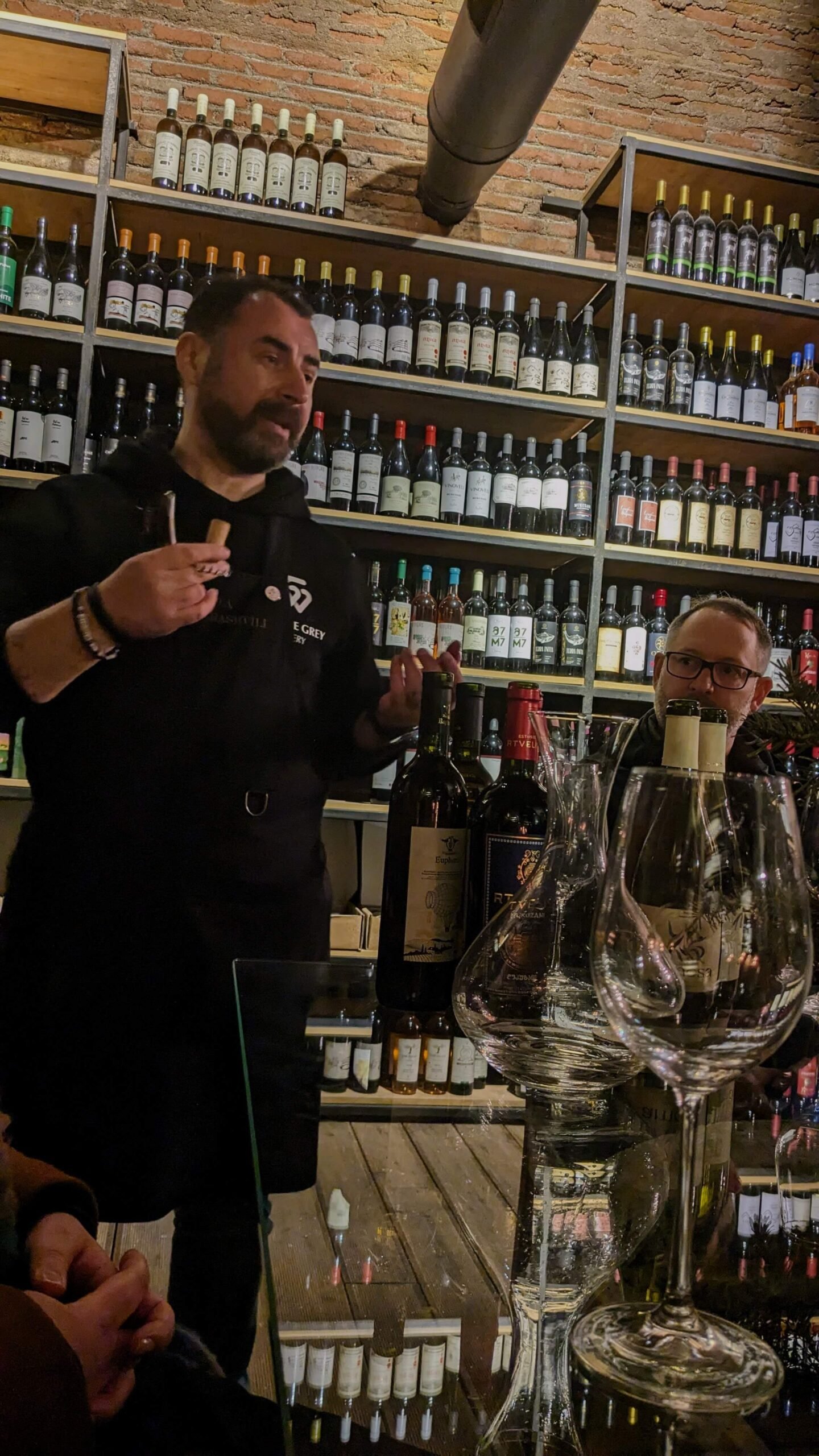
Of course, I also quaffed lots of homemade amber wine at hole-in-the-wall eateries across the country.
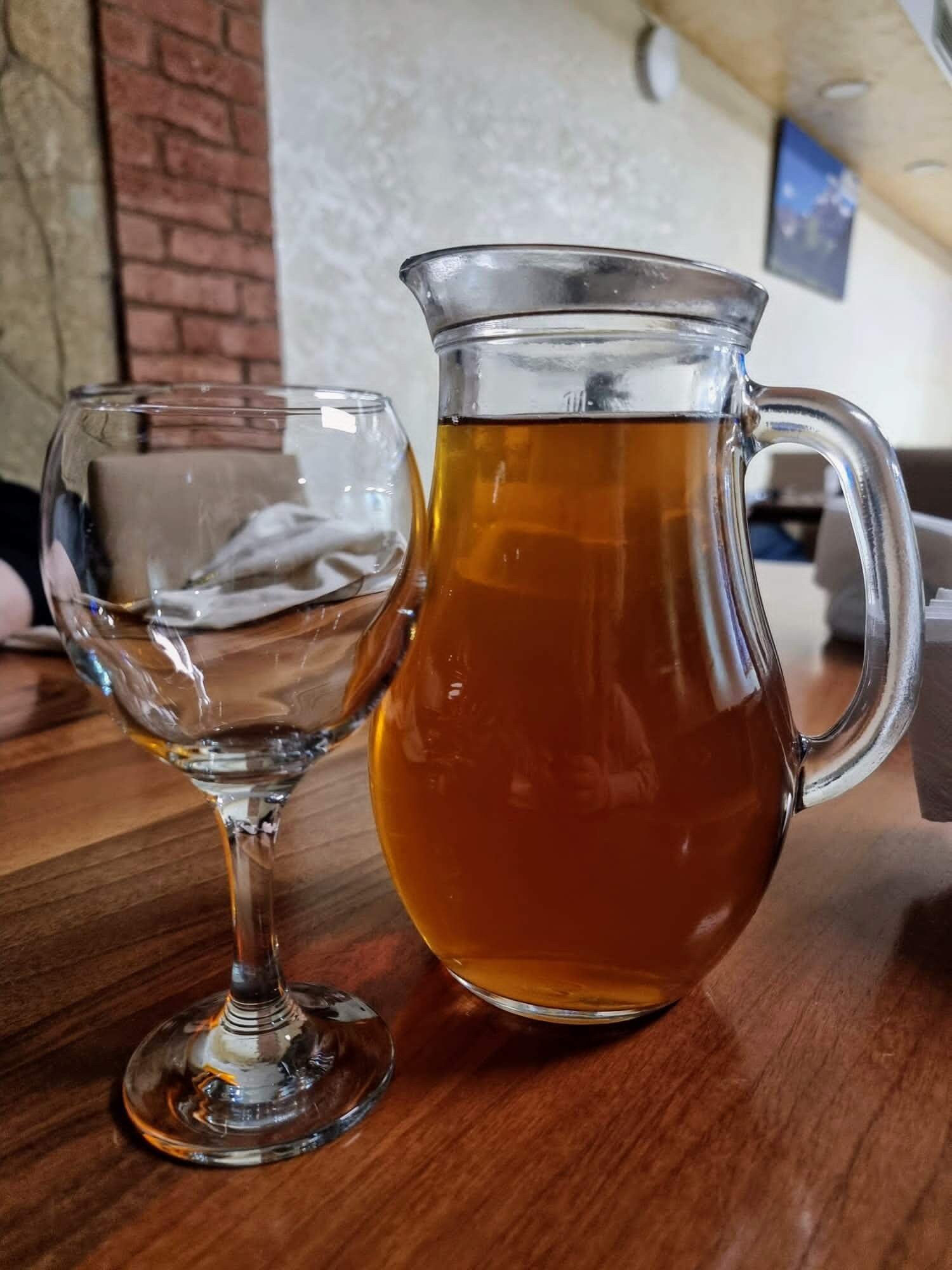
Among the Georgian amber wines that I tried was a 2014 wine that I sampled at Giuaani Winery, in the heart of the Kakheti region (where 75% of Georgian wine is made). It was made from the Rkatsiteli grape and had been fermented for six months in qvevri. This full-bodied wine was rich with tannins and tasted of ripe and dried fruits.
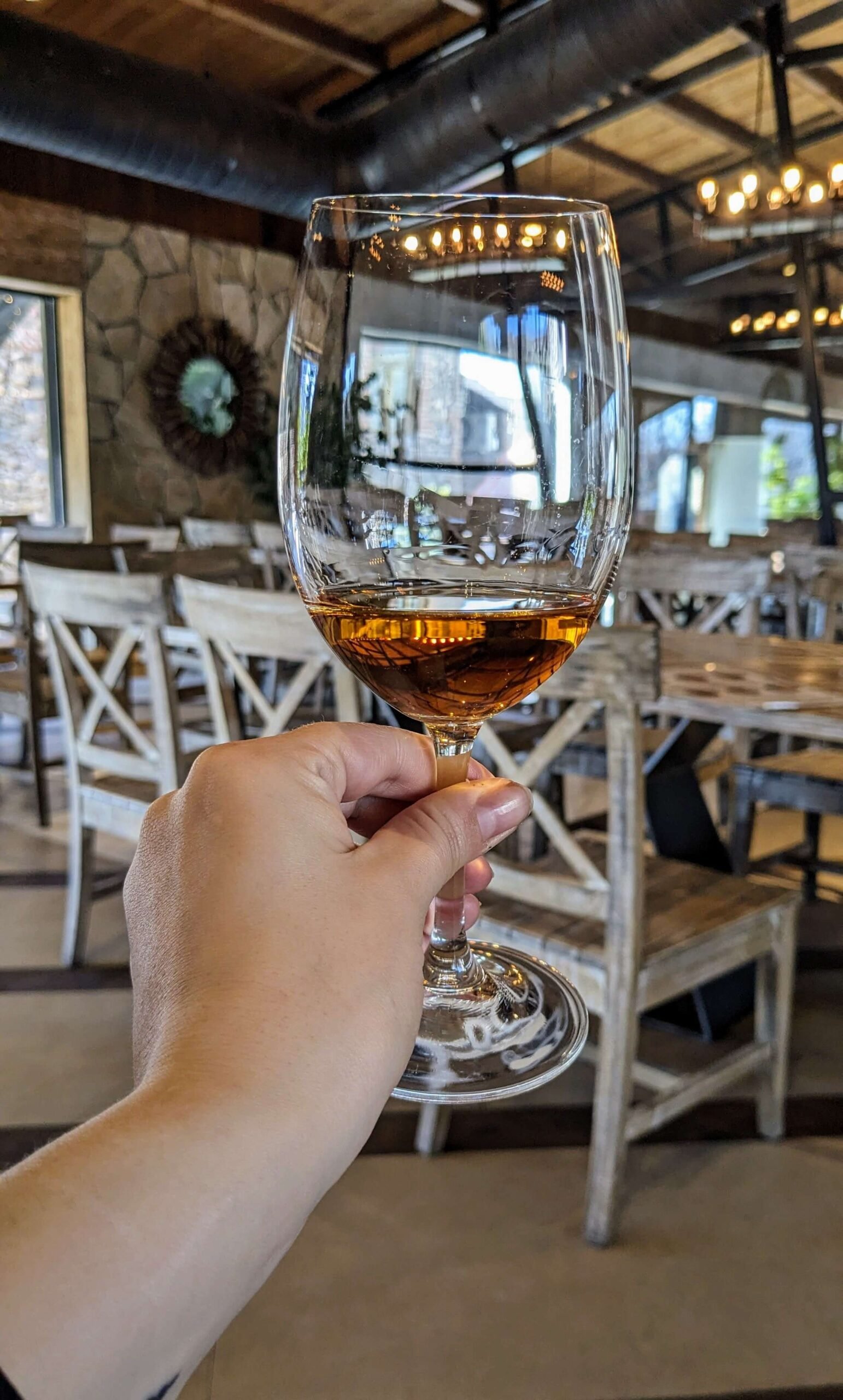
At Kerovani Winery in Sighnaghi, I tried another six month Rkatsiteli wine, as well as a 2022 Rkatsiteli that had only had skin contact for one month. This wine was also dry, but a lot softer on the palate, and I personally found it easier to drink.
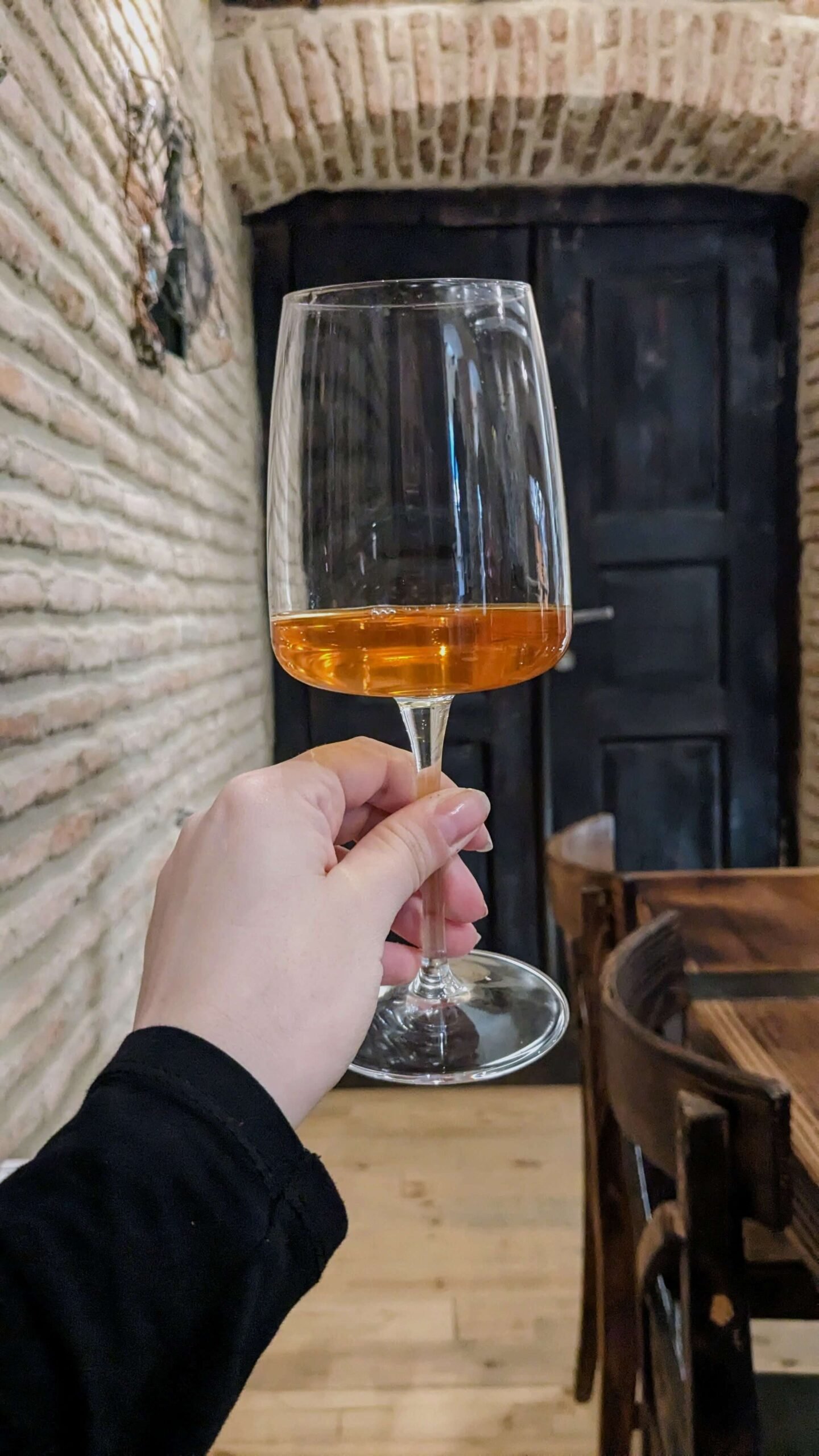
At Kerovani winery.
My favourite, however, was a 2021 Tsolikouri that I tried at St. Bunny in Tbilisi. This was a natural wine made in Samegrelo with Tsolikouri grapes. It had been made with 30% skin contact in a qvevri for five months, and it was gold in colour with notes of pear, green apple, lemon zest, and field flowers.
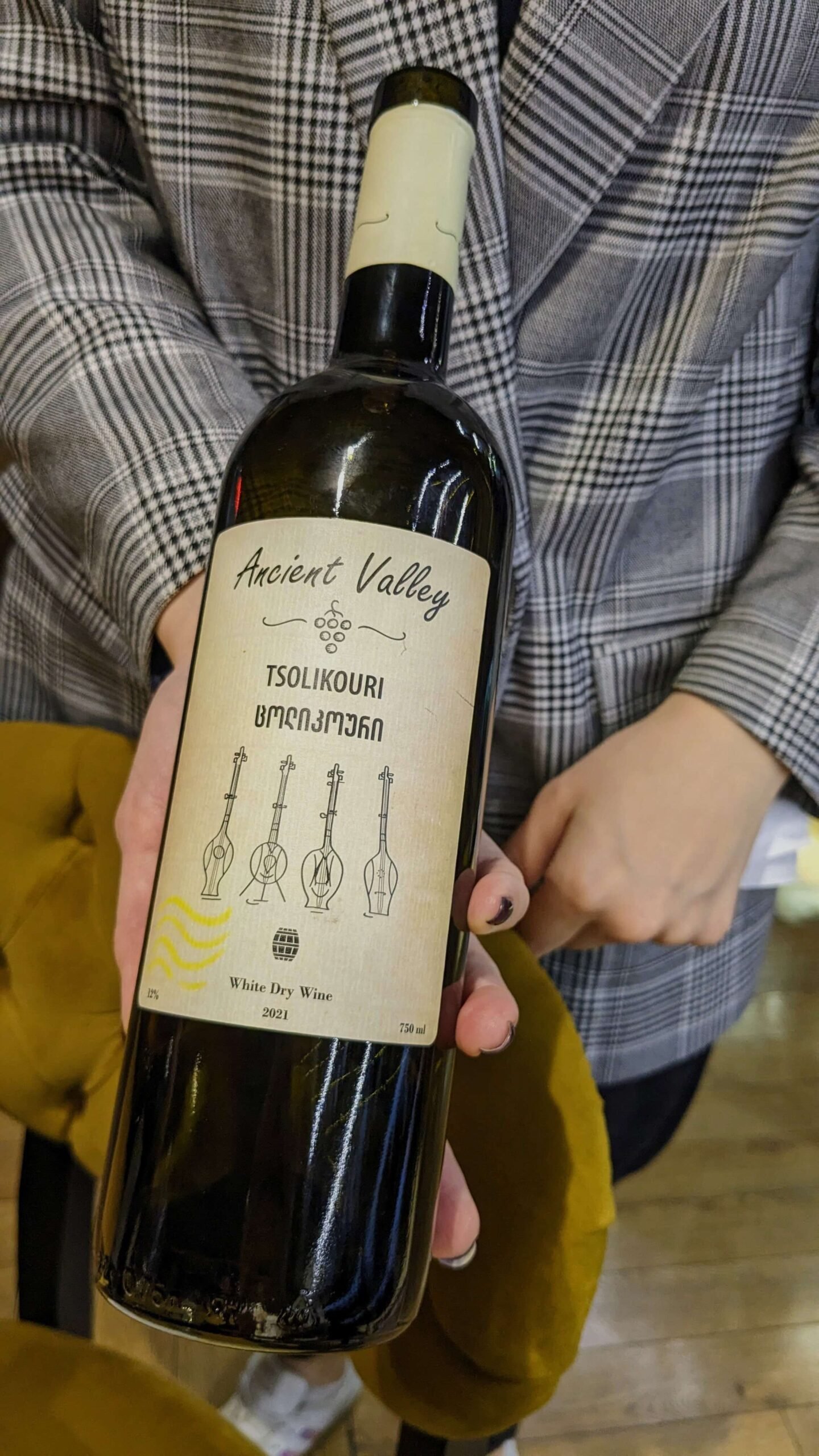
Popularity of Amber Wine
If you’re curious about amber wine, you’re not alone.
The Georgian amber wine industry is booming, and according to the National Wine Agency of Georgia’s 2021 report, Georgia exports wine to 62 countries, generating $250 million in revenue (a 16% increase from 2020).
The US alone imported one million bottles, the highest since Georgia regained independence from the Soviet Union in 1991.
In Georgia itself, there are over 100,000 family wineries, with a population of just 3.7 million. This might not sound like much, until you compare it to France, which has a population of 68 million and just 27,000 wineries, or Italy, which has 37,000 wineries and a population of 59 million.
Basically, Georgian people know wine, and they know it well (and chacha, of course).
Of these 100,000 family wineries however, only 350 are registered to export.
I have no doubt that with the growth of gastrotourism and enotourism, this number will increase dramatically in the future.

Amber vs Orange Wine
You may be wondering whether amber wine in Georgia is the same thing as orange wine.
Indeed, many countries refer to amber wine as ‘orange’ wine, and while it’s true that they are both talking about the same thing, Georgians never refer to amber wine as orange wine.
This is partly because their wines are truly amber in colour, but also because Georgians feel as though the term ‘orange wine’ confuses people, who may actually think that it refers to wine made from oranges!
It was actually a British importer named David Harvey who coined the term ‘orange wine’ in 2004, while Georgians have been referring to the wine as karvisperi ghvino – amber wine – since the dawn of time.
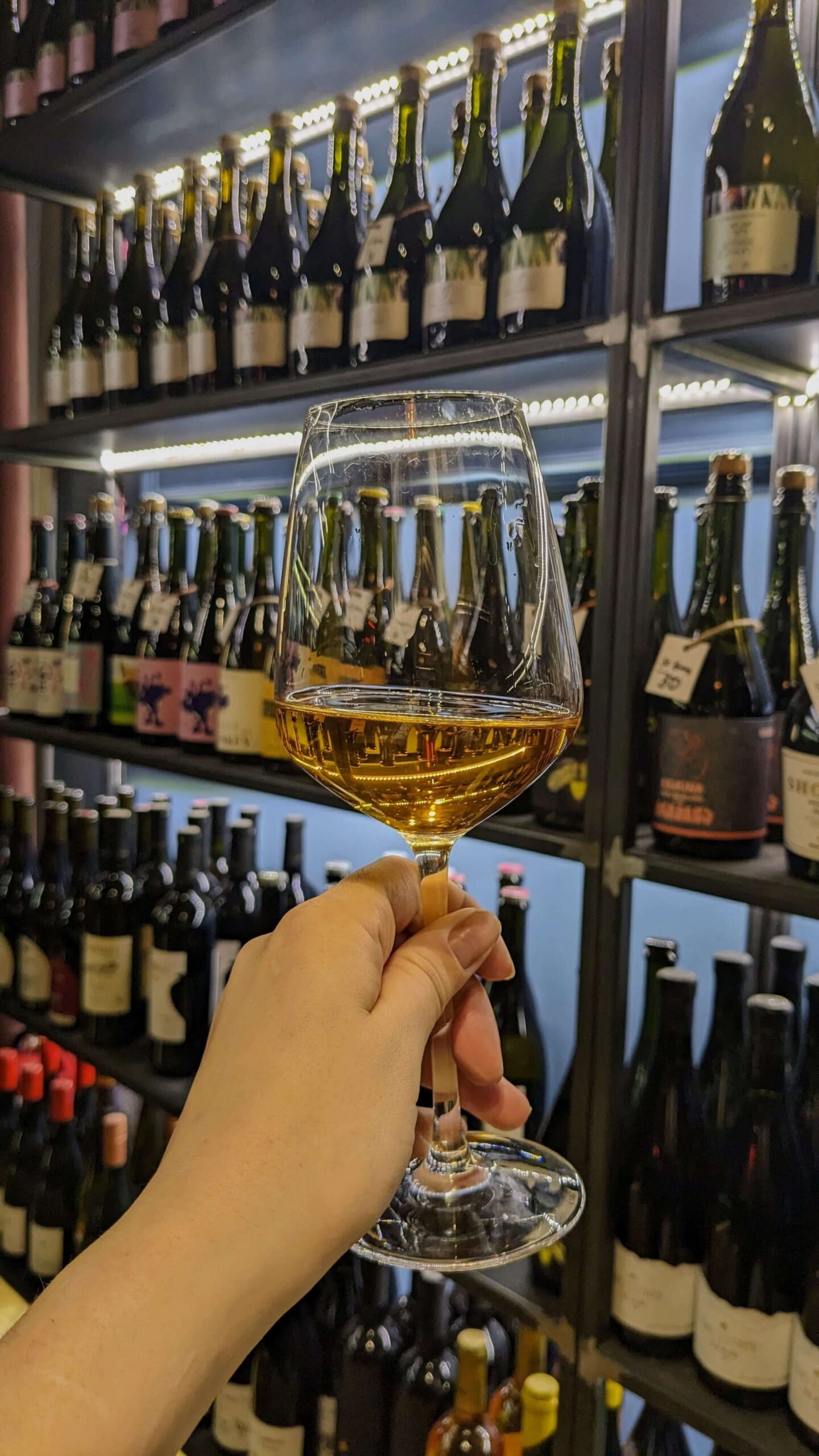
Georgian Amber Wine | Final Thoughts
As you can hopefully tell, my explorations into the world of amber wine were certainly enlightening.
From mistaking its deep tannins for rosé on that first night in Tbilisi to uncovering its 8000 year history and meeting with the country’s best winemakers and sommeliers, it’s really been a journey!
Georgian winemaking, rooted in tradition and innovation, stands as a testament to the enduring legacy of qvevri and the artistry of skin-contact fermentation.
The allure of amber wine lies not only in its unique taste, but also in its embodiment of millenniums of cultural heritage.
So, whether you find yourself exploring its nuances in one of Kakheti’s many vineyards, or indulging in an elegant Tbilisi wine bar, I hope that your journey into amber wine is as rich as mine!
If you enjoyed this post, you may also enjoy:
Georgian Chacha – 8 Facts About Georgia’s National Drink
How to Choose the Perfect Kakheti Wine Tour
Cheers! 🍷
XOXO
If you liked this article and would like to support my work, please click the button above to donate a couple of bucks and buy me a coffee. The ad revenue that I receive on this website is minimal, so support from my readers enables me to keep creating content that you (hopefully!) love to read.
Disclaimer: Travelling Jezebel contains affiliate links. If you make a purchase on a recommended site, I may make a commission at no extra cost to you.


4 Comments